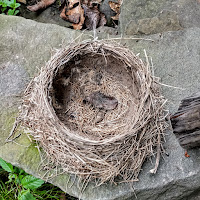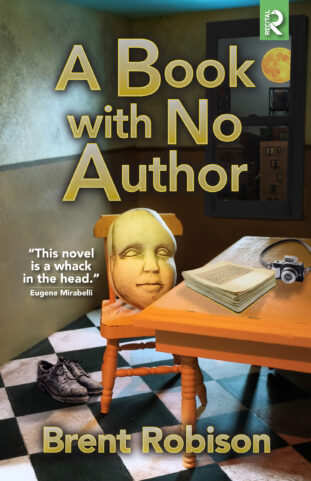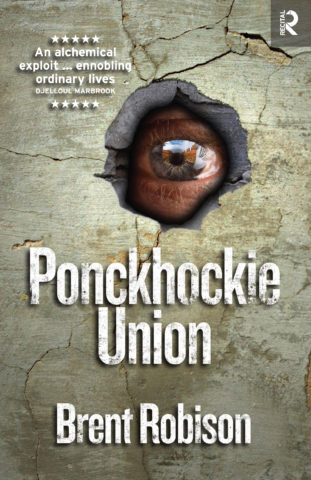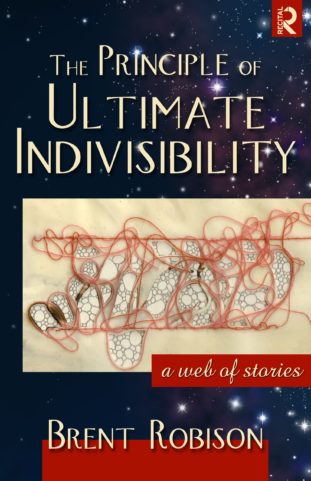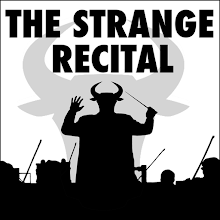When it comes to writing or video, spontaneity is a challenge for me. I wanted to throw off the shackles of planning, so one day I just launched my camera app, put on a hat to hide my bad hair (okay, not very spontaneous), clicked the Record button, and said a few things that came to mind about my new novel.
But then… I couldn’t help myself, I had to do some post-production, because my talking head just doesn’t give enough feeling for the content of the book. Here is the semi-spontaneous result. I hope you’ll take 56 seconds to watch it. Then continue reading below.
For this video to function as intended (to give an impression of the book’s content), it required editing. It needed a second pass. Vocal flubs had to be removed, other images added, music mixed in, all accomplished with a certain precision that was not present in the first spontaneous effort. Obviously, it’s a lot like the process of writing: a first draft, then revisions, then a final edit.
The mama robin who built this nest put in a lot of work as well. The biological imperative is both pure spontaneity and hard-wired automatic behavior, an “instinct.” Maybe some robins are more skilled than others, but I’ll bet most of their nests are like this one: a near-solid mud bowl (clearly needed as a safe place to raise their young), crafted in an almost perfect circle (why?). Form may follow function, but here’s a case where symmetrical beauty is apparently a built-in bonus. The instinctual drive, the spontaneous impulse, results in both pragmatic functionality and aesthetic precision. No second pass required.How do they do that? I won’t attempt to answer that question.
What I am interested in is the driving force. A robin is driven by eons of evolved instinct to build its nest, and to build it in just that way. It does not make a decision to do so; it just begins building when the season triggers the instinct. Free will is not involved.
To what degree is free will involved in my so-called “decision” to write fiction?
I’ve spoken to other writers who’ve had an experience similar to mine. Feeling discouraged with the marketplace, we’ve decided to give up writing. Maybe we feel briefly relieved of a burden. But not for long. Soon, maybe within mere days, we’re back at it, either forced or enticed by… something. What? We may claim it’s the characters speaking irresistibly in our heads. But what is behind that?
Perhaps there’s an elemental compulsion with which one is either in tune or hopelessly struggling against, on the order of Dylan Thomas’ “The force that through the green fuse drives the flower.” The life force. A law of nature, a bedrock truth.
The late Paul Auster had a lot to say on this subject. “It’s not that writing brings me a lot of pleasure,” he once said in an interview, “but not doing it is worse.” One of his non-fiction books is the 1991 essay collection The Art of Hunger. In the title piece, he delves into two of my favorite works: first, in depth, Knut Hamson’s novel Hunger, capped by Franz Kafka’s story, “The Hunger Artist.” He gives a lucid, surgical analysis that is worth reading in full, but right now my focus is on what Auster appears to be saying about the real art of the modern world:“It is first of all an art that is indistinguishable from the life of the artist who makes it…an art that is the direct expression of the effort to express itself. In other words, an art of hunger.”
In a review of the collection, the Chicago Tribune says, “Auster clearly shows that literature begins and ends outside literature, as something one does to live.”
Writing as an act of survival. Writing because one has no choice.
In a fundamental way, this connects to my new novel, A Book with No Author. The book is an investigation into where stories come from. What is the difference between life lived and life told? Do you own your life story? One of the characters is a writer who appears to have stolen the life stories of others – but without understanding how he did it. Among the last words we hear from him are these: “Believe me, I tried to stop it, this mad dictation. But... I couldn’t dodge the influx, the dive-bombing stream of language targeted on my cerebral cortex. The words, the voices, the images, they just wouldn’t leave me alone.”
He had no choice. Is this mental illness, or is it simply the plight of an artist? And what is an artist but one who is born with this inexplicable drive?
In the video above, the question arises: When I say “I,” what do I really mean? Do I mean all these events that have happened to me, that make up the story of my life? Do I mean the personality I’ve developed with which to interact with the world? Or do I mean something deeper than either of those, that foundational presence from which springs, without my conscious will, the drive to create?I started this exercise by talking about spontaneity. To be fully “spontaneous”... isn’t that just to follow an irresistible impulse? A naturally-occurring drive, just like the one that tells us we must eat to live? The frequent lack of spontaneity that I perceive in myself is actually only recognizable as a surface artifact of the fundamental, ever-present hunger for self-expression, which will have its way, spontaneous or not. To resist it is doom.
Maybe the only difference between me (or you) and the robin is self-awareness. It’s comical to imagine a robin bothering with all this contorted contemplation, questioning its own instincts, asking why and how and jabbering to other robins, hoping they’ll understand.We humans are so silly.
